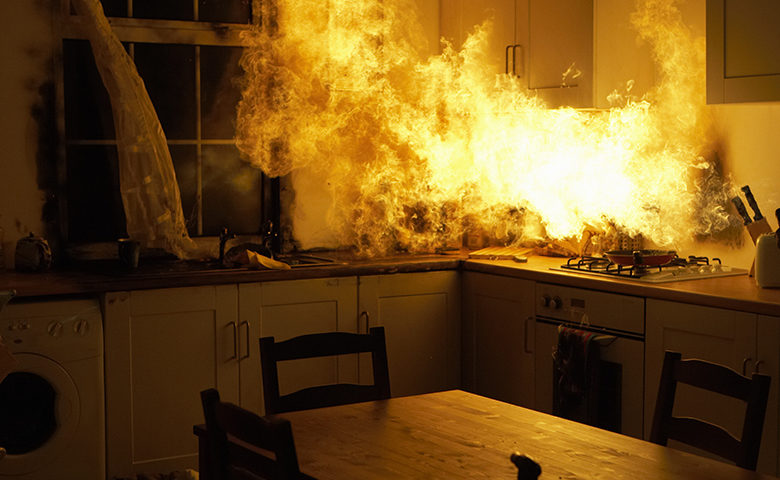Fire safety is mandatory in the workplace—at many companies, it’s practiced often and well-communicated among everyone in the building. But even though it’s required and practiced and communicated, some employees are still complacent about the risks associated with fire in the workplace.
And what about safety outside the workplace, where fire safety isn’t regulated or communicated—how often are people thinking about the risks at home?
Research from December 2018 by the National Fire Protection Agency shows that four out of five fire-related deaths were caused by home structure fires. Can the knowledge from workplace fire safety be applied at home?
The answer is yes—but you need to know how to talk to your employees.
What do you do if an alarm sounds at home?
When you’re in the workplace, whether it’s a drill or a real alarm, everyone knows to evacuate and meet at the agreed-upon location. Often the tasks associated with an evacuation procedure at work have been divvied up (check all areas to make sure everyone is out, close the doors, call 911, and bring the attendance sheet).
But what about at home? Most people do not evacuate their homes upon hearing their smoke alarm or carbon monoxide alarm. In fact, most people aren’t sure when it’s appropriate to call 911. It’s as important to have an evacuation plan at home as it is in the workplace. If you don’t already have one, you need to implement one immediately.
Similar to the evacuation plan at work, in order for it to be successful at home you need to ensure your plan is communicated to everyone in your home, explore more than one way out of every area together, agree on the meeting spot and practice regularly so that no one panics in the event of a real emergency.
Where are the two closest exits?
It’s essential to know multiple escape routes in the workplace in the event of a fire blocking your go-to exit. This is necessary at home as well. Going to the roof is a fatal mistake people often make in the event of a fire in an apartment or high-rise buildings. Most people know to avoid the elevators and take the stairs when the alarm sounds. But when smoke is discovered while retreating down the staircase, it’s common for people to want to go up to the roof, away from the smoke and fire. Unfortunately, very seldom do rooftop helicopter rescues happen when there’s a fire.
If you encounter smoke on your way down a staircase, it’s recommended that you go to an alternate staircase, back to your apartment/office or to an area where you can close the doors, call for help and wait for further instruction.
Where are the fire extinguishers located?
Chances are you walk by fire extinguishers affixed to the wall regularly at work without registering that they’re there.
But most people don’t realize fire extinguishers are also recommended as part of your home fire safety plan. Consider the following questions when reviewing your home fire safety plan:
- Do you have a fire extinguisher on each story of your home?
- Do you know the different classifications of fire extinguishers and what types of fire they’re used for?
- Have you used a fire extinguisher before?
Fire extinguishers may be more important in your home than they are in the workplace, so it’s important to keep a fully charged extinguisher on each level of your home.
Here’s a quick refresher on the different types of fire extinguishers:
- Class A is meant for combustible materials like wood, paper, rubber and plastic.
- Class B is meant for flammable liquids like gas, oil, paints or solvents.
- Class C is meant for electrical equipment like wiring, fuses, appliances and motors.
- Class D is meant for combustible metals (magnesium, titanium, sodium, potassium, uranium, lithium, plutonium and calcium).
The ABC-type extinguisher is the most common because it can put out three classes of fire, making it the recommended extinguisher to have in your home.
If you need to use a fire extinguisher, remember P.A.S.S.:
Pull the pin,
Aim the nozzle,
Squeeze the handle and
Sweep side to side at the base of the fire.
If you haven’t been trained on how to use an extinguisher, you should never make your first attempt on a live fire that urgently requires extinguishing.
Emergency planning in the workplace shouldn’t stop with the workplace. Being prepared is the best defense against a fire. By asking these questions and opening the dialogue with your employees, you can ensure they’ll be safe even when they’re not at work.
Caring for your employees’ safety 24/7 is a great way to improve culture and engagement. Knowing there are resources that can help them with their fire safety plan at home—and that their workplace safety professional is supporting them in making their families safer—will make them feel more valuable and ultimately improve their performance at work.

